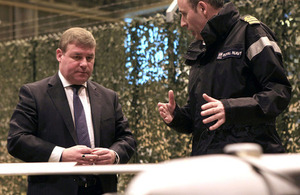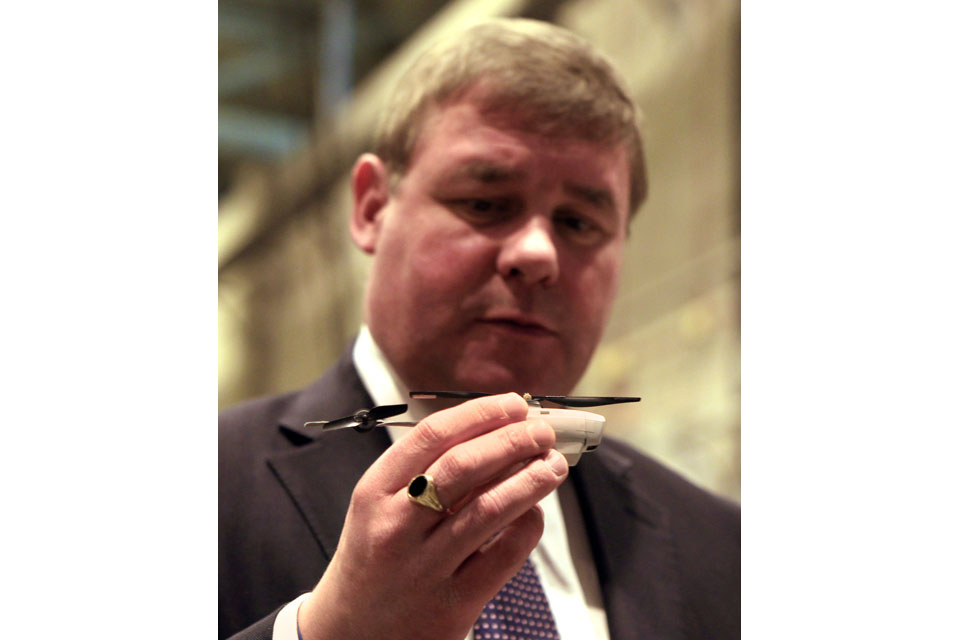Armed Forces Minister views UK unmanned aerial systems
Mark Francois toured RAF Waddington today to view the full scope of the UK's unmanned aerial systems capability.

Mark Francois speaks to Royal Navy Commander Bow Wheaton
Mr Francois spoke to operators of Navy, Army and RAF unmanned aerial systems (UAS), including Scan Eagle, Desert Hawk and Reaper.
He also viewed the inside of a Reaper control cabin and was shown how a highly-trained and highly-qualified team control the aircraft, with pilots, sensor operators and analysts all working together to make decisions in real-time.
Mr Francois’ visit was part of a wider drive by MOD to dispel some of the myths around the use of unmanned aerial systems, demonstrate the vital role they play in supporting personnel on operations in Afghanistan, and confirm the utility of such systems for the future.
Mr Francois said:
Our remotely-piloted systems provide life-saving intelligence, reconnaissance and surveillance on operations as well as giving us the ability to strike precisely at those who pose a risk to our personnel and the people they are trying to protect.
I was delighted to meet with and listen to the talented personnel who operate this capability. They deserve great credit for the work they do in saving the lives of our ground troops, our Afghan and international colleagues, and Afghan civilians.

Armed Forces Minister Mark Francois takes a close look at the Black Hornet nano unmanned aerial system [Pictures: Corporal Bibby RAF, Crown copyright]
Ground troops who have served in Afghanistan were also present at RAF Waddington to describe how UAS assets had provided them with life-saving support at vital times.
Air Vice-Marshal Philip Osborn, Joint Forces Command Capability Director, said:
The UK’s unmanned aerial systems provide UK and allied forces with persistent surveillance of enemy positions without putting their lives at unnecessary risk. In today’s operational environment they are still used predominantly in surveillance and reconnaissance roles.
When precision strike capability is required by ground commanders, this is always in accordance with international humanitarian law and governed by the same strict rules of engagement as those governing manned aircraft.